Earlier this spring I started reading yet another book on gardening in south Florida. This one, by James Kushlan, with photos by Kirsten Hines, is called Attracting Birds to South Florida Gardens. It came out last fall from the University Press of Florida. I didn’t order it at first, because I already have tons of books on gardening in Florida: gardening with native plants, butterfly gardening, gardening for wildlife, gardening with groundcovers, hardcover, softcover—you name it, I’ve got a book on it.
But, as often happens, a month or two ago I ran into a spell where I didn’t have much to read, so I ordered it and went straight through it when it arrived. And I’m glad I did, because it reminded me of a couple of concepts that I’d lost sight of during my recent replanting: the value of a diverse lawn, and the importance of keeping some areas of the yard free of mulch (about which, more in a later post). On the diverse lawn:
Lawns are desirable in almost any garden to provide unobstructed vistas, separation of planting areas, dramatic transitions, paths and walks, and open places for backyard activities. Showing a tidy bit of lawn out front, adjacent to the neighbor’s tightly manicured lawn, might ensure neighborhood or municipal peace. Lawns are important for birds, too, but what birds do not need are fields of monocultural sod grass. Of all the ways bird gardening differs from other gardening, the diverse lawn may be the hardest to get used to given that so much time, energy, and money are customarily spent tending a typical South Florida sod lawn, and heavy pressure from neighbors and the community is usually at play as well.
What birds do need are small patches of diverse lawn. Diverse lawns are composed of many species of short plants, encouraged by infrequent mowing at high wheel settings. These lawns provide a diversity of insects, fruits, and seeds at staggered times.
A diverse lawn is crucial for wildlife gardeners, because pollinators depend on some kind of flowering plant being in bloom every day of the year. With a normal lawn, a sod monoculture that’s always mowed so that it never flowers (St. Augustine grass has lovely flowers), and that’s weeded to make sure no diverse flowering plants can get established, the homeowner is dependent on flower beds and any shrubs or trees to carry the entire burden of providing nectar and pollen. Or, as more frequently happens, such yards remain biological deserts—pleasing to the eye, perhaps, of those who are used to our imported craze for lawns that look like they’re tended by flocks of sheep, but utterly devoid of anything that might attract a butterfly or a bee:
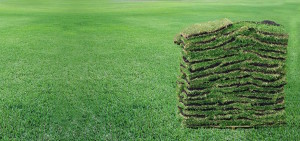
The bird gardener, though, wants to attract these insects, because they are what attract birds to the yard. A truly diverse lawn in south Florida will have, without the gardener even lifting a finger, the following “weedy” insect-attracting plants (and these are just in my yard; the “selection” varies from place to place):
Spanish Needles (Bidens alba), nectar source for almost any butterfly and larval host plant for Dainty Sulphurs:
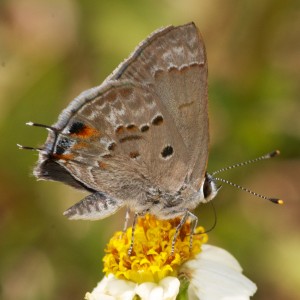
Trefoils (Desmodium spp.), larval host plant for Gray Hairstreak, Dorantes and Long-tailed Skipper butterflies:
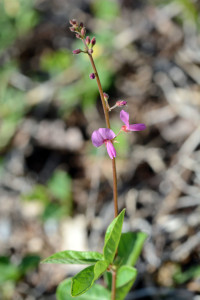
Wireweed (Sida acuta), a nectar source for many insects and the larval host plant for Gray Hairstreak, Columella Hairstreak, and Tropical Checkered Skipper butterflies:
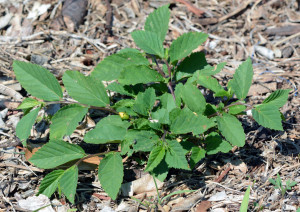
Virginia Pepperweed (Lepidium virginicum), nectar plant for many butterflies and larval host plant for Great Southern White, European Cabbage White, and Checkered White butterflies:
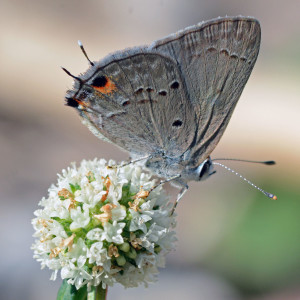
Cheesy-toes (Stylosanthes hamata):
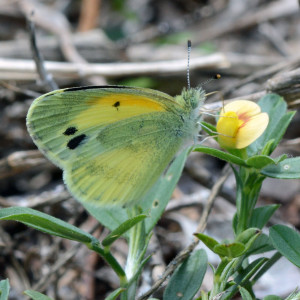
Pink Purslane (Portulaca pilosa), a beautiful low-growing mat-forming weed with pink flowers:
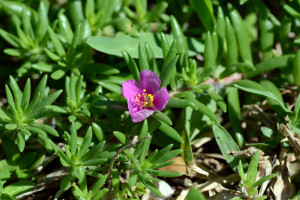
Dayflowers (Commelina spp.), a winding, climbing, grasslike plant related to the spiderworts:
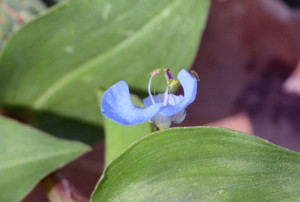
The sticky-seeded “tarvine,” Boerhavia diffusa, also known as Red Spiderling for its flowers and its sprawling, long-legged growth habit:
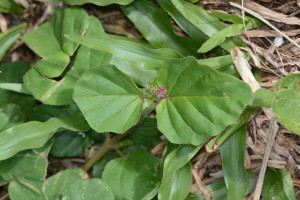
And all of this without even trying!
A trip to the native plant nursery or a meeting of the local FNPS chapter can net the bird/wildlife gardener more flowers, like Powderpuff Mimosa (Mimosa strigillosa):
Or Tropical Sage (Salvia coccinea):
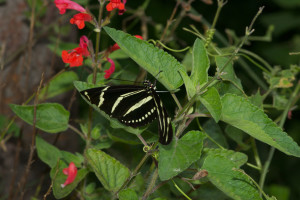
All of these plants (except maybe the last) can be mowed at the homeowner’s convenience, to keep the diverse lawn, while functioning like a weedpatch, from looking like one. As Kushlan reminds us, “A diverse lawn need not look like a knee high, unkempt vacant lot. It needs to be mowed regularly to keep it as a lawn, but at a high mower setting.”
In fact, if you leave an unmowed patch, even the typical St. Augustine grass sod will send up beautiful flowers:
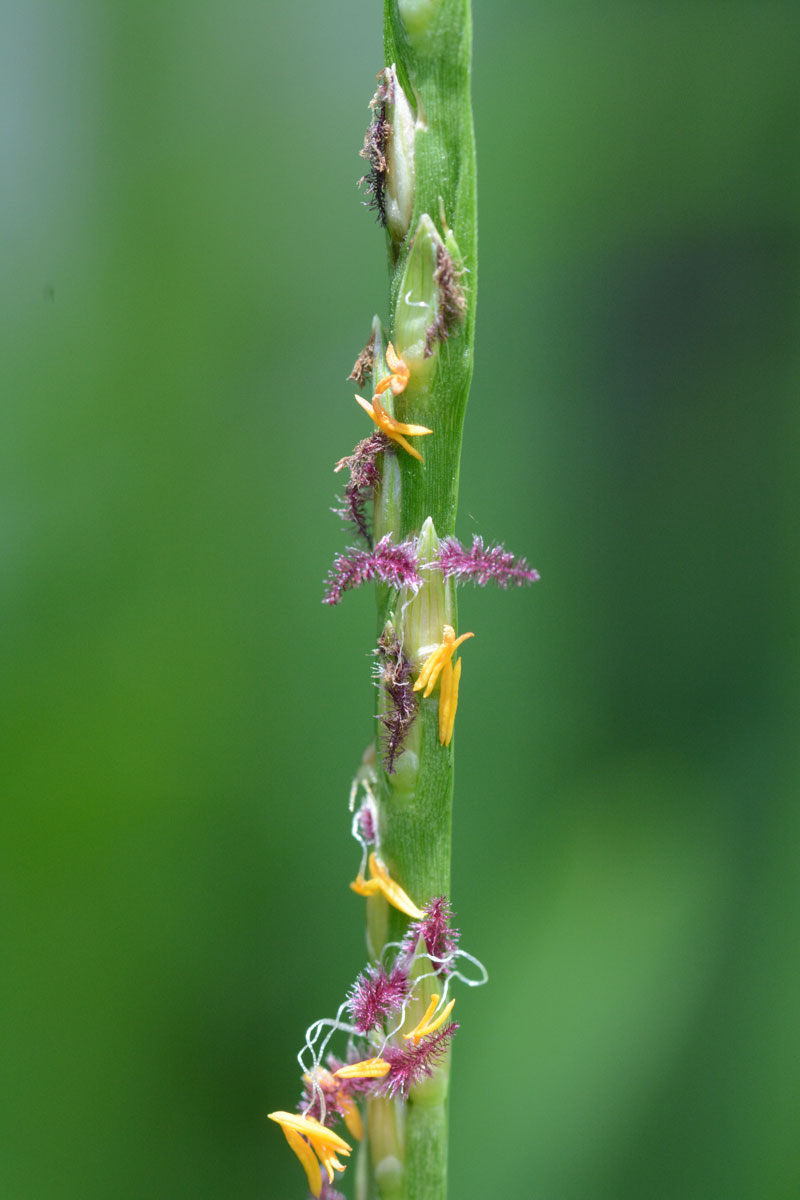
Why not give it a try?
References
Kushlan, J. and K. Hines. 2014. Attracting Birds to South Florida Gardens. Gainesville: UP of Florida.
